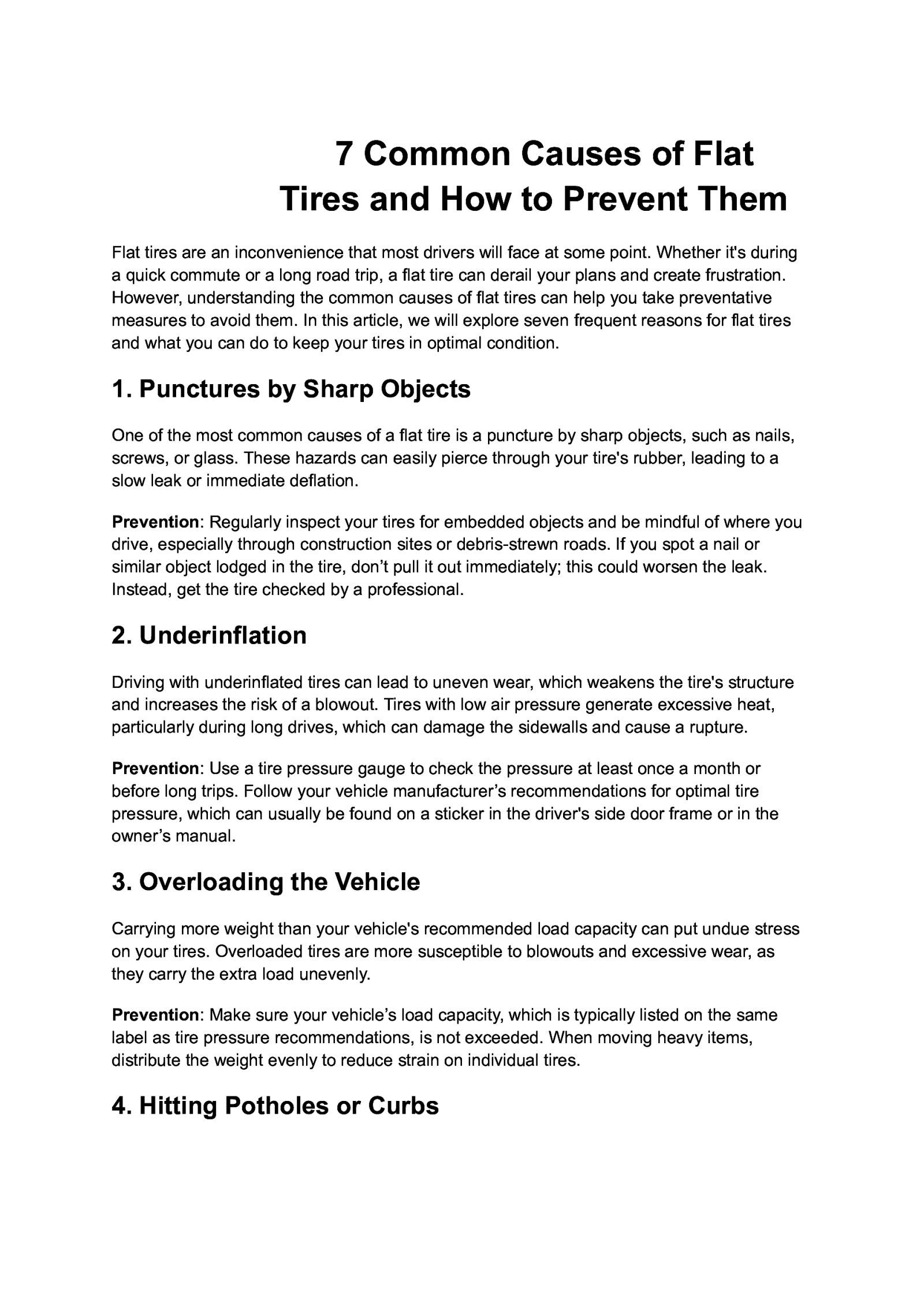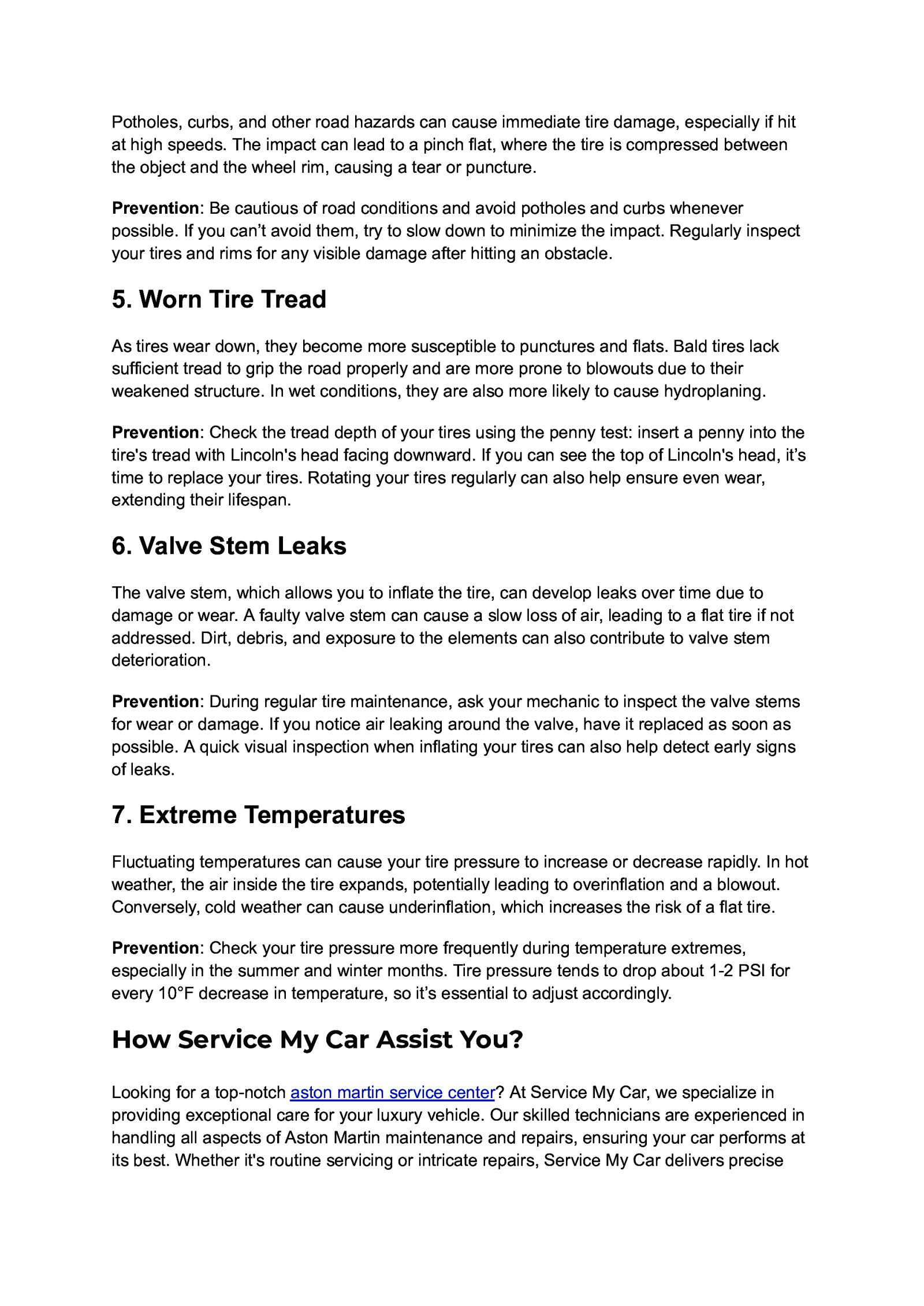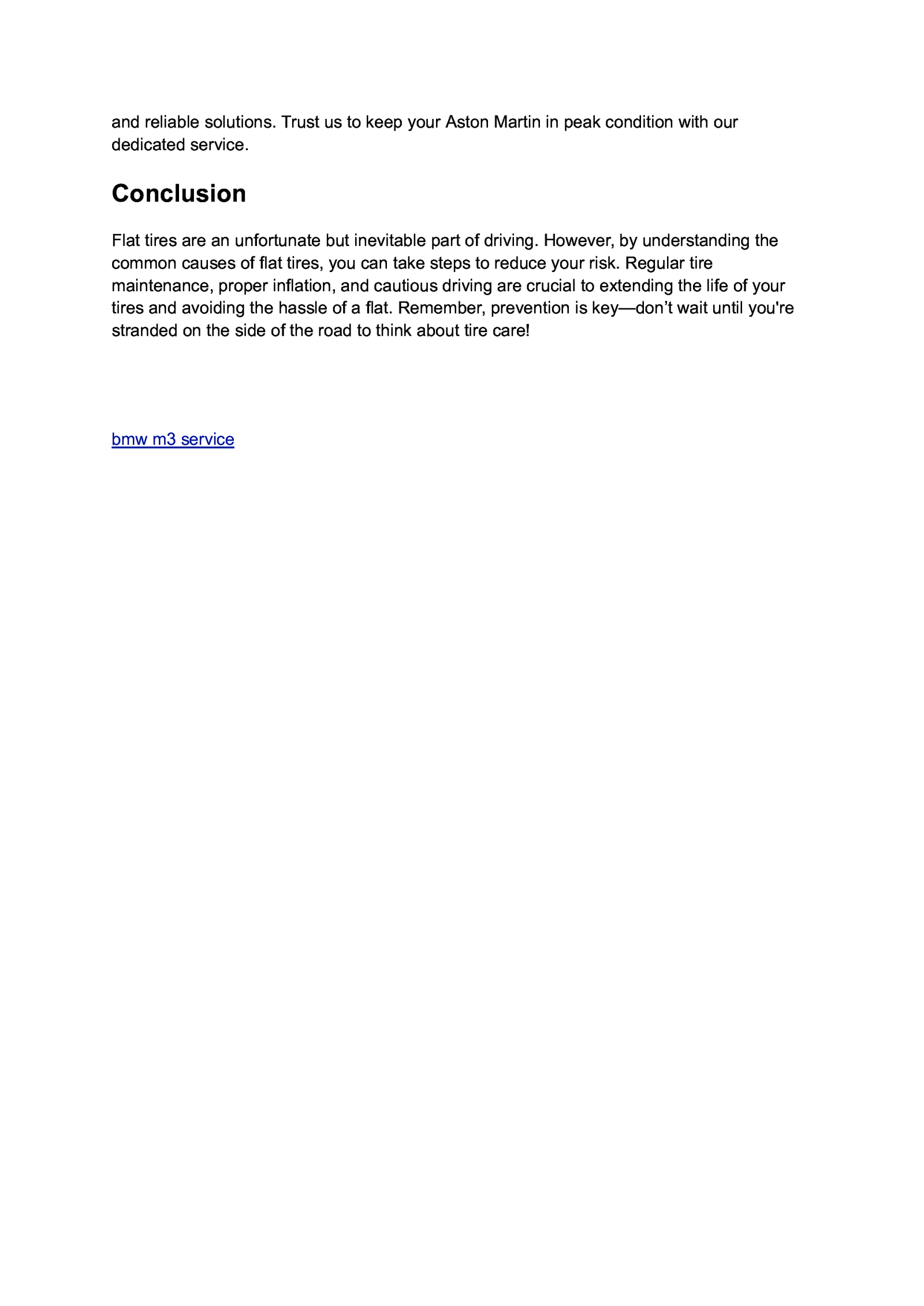7 Common Causes of Flat Tires and How to Prevent Them Flat tires are an inconvenience that most drivers will face at some point. Whether it’s during a quick commute or a long road trip, a flat tire can derail your plans and create frustration. However, understanding the common causes of flat tires can help you take preventative measures to avoid them. In this article, we will explore seven frequent reasons for flat tires and what you can do to keep your tires in optimal condition.
- Punctures by Sharp Objects One of the most common causes of a flat tire is a puncture by sharp objects, such as nails, screws, or glass. These hazards can easily pierce through your tire’s rubber, leading to a slow leak or immediate deflation. Prevention: Regularly inspect your tires for embedded objects and be mindful of where you drive, especially through construction sites or debris-strewn roads. If you spot a nail or similar object lodged in the tire, don’t pull it out immediately; this could worsen the leak. Instead, get the tire checked by a professional.
- Underinflation Driving with underinflated tires can lead to uneven wear, which weakens the tire’s structure and increases the risk of a blowout. Tires with low air pressure generate excessive heat, particularly during long drives, which can damage the sidewalls and cause a rupture. Prevention: Use a tire pressure gauge to check the pressure at least once a month or before long trips. Follow your vehicle manufacturer’s recommendations for optimal tire pressure, which can usually be found on a sticker in the driver’s side door frame or in the owner’s manual.
- Overloading the Vehicle Carrying more weight than your vehicle’s recommended load capacity can put undue stress on your tires. Overloaded tires are more susceptible to blowouts and excessive wear, as they carry the extra load unevenly. Prevention: Make sure your vehicle’s load capacity, which is typically listed on the same label as tire pressure recommendations, is not exceeded. When moving heavy items, distribute the weight evenly to reduce strain on individual tires.
- Hitting Potholes or Curbs


